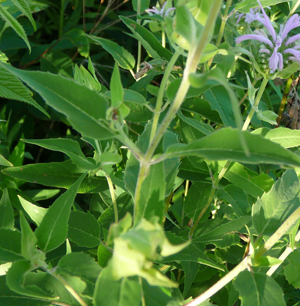
- #Bee balm plant looks like mildew full#
- #Bee balm plant looks like mildew professional#
- #Bee balm plant looks like mildew series#
Should be cut to the ground after flowering to promote the growth of new healthy shoots and leaves. As with most plants too much watering can cause root rot, mildew, and disease.Fast-growing, Monarda spreads vigorously and will need to be divided every 3 years. Deadhead spent flowers to encourage new blooms.Monarda flowers attract streams of butterflies, hummingbirds, and other beneficial pollinators, but this plant is deer and rabbit resistant.Great for containers, it makes excellent cut flowers too. The boldness of its blooms makes it terrific for massing or as an accent plant. Apply Fungicides: Fungicides can effectively control powdery mildew from spreading, but they're not. Avoid planting mildew-prone plants in especially sheltered spots. Also: Consider airflow when you choose spots for your plants. This showy perennial is a striking addition to informal borders or prairies and meadows. Divide perennials every few years to keep them loose and open and prune trees and shrubs so they don't get too thick.Providing good air circulation to combat powdery mildew is important. Protect from excessive winter wet and do not allow it to dry out in summer. It is not too fussy about soils, provided they are consistently kept moist.
#Bee balm plant looks like mildew full#

#Bee balm plant looks like mildew series#
The Balmy series offers other colors, too.

Luckily, with proper treatment and care, you can safely and inexpensively. Here’s an excerpt from this fact sheet, Yard and Garden: Bee Balm from Iowa State.
#Bee balm plant looks like mildew professional#
Blooming for weeks from mid-summer to early fall, they rest upon a whorl of decorative chocolate bracts and attract scores of butterflies and hummingbirds. The plants resist mildew, deer and rabbits, and the 10 to 12-inch tall stems are good for cutting. Bee balm plants are especially susceptible to a kind of mold called powdery mildew. Answer: Kate Garland, Horticultural Professional I cannot tell what might be causing the black stains on the stems, but the leaves clearly have powdery mildew, a very common fungal disease on Monarda (bee balm). The plant attacked with this mildew is the beautiful Bee Balm. I would like to thank you for your excellent information on this subject. A spectacular sight in summer, award-winning Monarda didyma x fistulosa 'Oneida' (Bee Balm) is a clump-forming perennial boasting masses of bright scarlet flowers borne in dense, globular terminal heads. Your site was the first to pop up when I typed in powdery mildew and the one I clicked on.


 0 kommentar(er)
0 kommentar(er)
